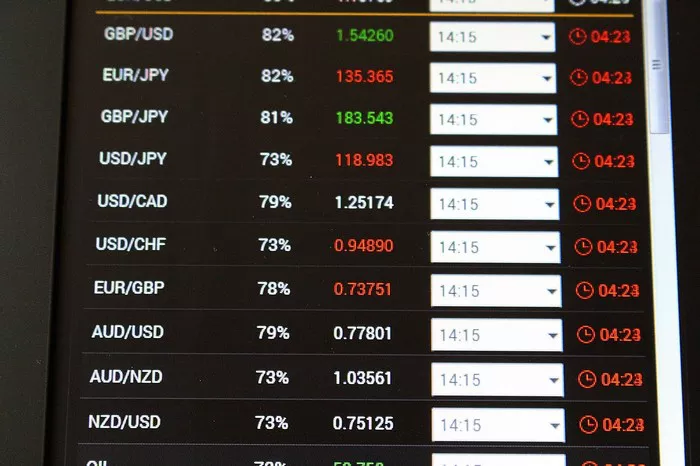Swing trading in the forex market is a popular strategy for traders who aim to capture gains in a currency pair within a short to medium timeframe, typically ranging from a few days to several weeks. This trading approach focuses on taking advantage of market “swings” or price fluctuations. Unlike day trading, which involves multiple trades within a single day, swing trading requires holding positions for a longer period, allowing traders to benefit from price changes without the need to monitor the markets continuously. This article will explore seven critical points about swing trading in forex to provide a comprehensive understanding of this trading strategy.
1. Understanding Swing Trading
Swing trading is a method that aims to capture short- to medium-term gains in a stock (or any financial instrument) over a period of a few days to several weeks. This trading style lies somewhere between day trading and trend trading (which involves holding positions for several months). Swing traders primarily use technical analysis due to the short-term nature of their trades, but they may also use fundamental analysis or a combination of both to make their trading decisions.
Key Characteristics
Time Frame: Typically, swing trades are held for a period of days to weeks.
Technical Analysis: Swing traders rely heavily on charts and technical indicators to identify potential entry and exit points.
Market Swings: The main goal is to capture a chunk of the potential price movement, known as a “swing,” in a given direction.
Advantages
Flexibility: Swing trading allows traders to capitalize on both upward and downward market movements.
Less Time-Consuming: Compared to day trading, swing trading does not require constant market monitoring.
See Also: 5 Reasons Not to Trade Forex on Weekends
2. Key Strategies and Techniques
Swing trading involves various strategies and techniques to identify potential trading opportunities. Some of the most commonly used methods include trend following, counter-trend trading, and breakout trading.
Trend Following
Trend following is a strategy where traders look to enter trades in the direction of the prevailing trend. This strategy is based on the idea that “the trend is your friend.”
Moving Averages: Swing traders use moving averages to identify the direction of the trend. For example, if the price is above the 50-day moving average, it is considered an uptrend.
Trend Lines: Drawing trend lines on a chart helps traders visualize the direction and strength of the trend.
Counter-Trend Trading
Counter-trend trading involves trading against the prevailing trend. This strategy is more risky but can be rewarding if executed correctly.
Support and Resistance Levels: Identifying key support and resistance levels helps traders spot potential reversal points.
Indicators: Tools like the Relative Strength Index (RSI) and Stochastic Oscillator can help identify overbought and oversold conditions, signaling potential reversals.
Breakout Trading
Breakout trading involves entering a trade when the price breaks through a significant level of support or resistance.
Chart Patterns: Patterns like triangles, flags, and head and shoulders can indicate potential breakouts.
Volume: An increase in trading volume often accompanies breakouts, confirming the move.
3. Technical Analysis Tools
Swing traders rely heavily on technical analysis tools to make informed trading decisions. These tools help analyze price movements and identify potential entry and exit points.
Moving Averages
Moving averages smooth out price data to create a single flowing line, making it easier to identify the direction of the trend.
Simple Moving Average (SMA): The average price over a specific period.
Exponential Moving Average (EMA): Gives more weight to recent prices, making it more responsive to new information.
Relative Strength Index (RSI)
The RSI measures the speed and change of price movements. It oscillates between 0 and 100 and is typically used to identify overbought or oversold conditions.
Overbought: An RSI above 70 may indicate that the currency pair is overbought.
Oversold: An RSI below 30 may suggest that the currency pair is oversold.
Bollinger Bands
Bollinger Bands consist of a middle band (usually a 20-day SMA) and two outer bands that represent standard deviations away from the middle band. These bands help traders identify periods of high and low volatility and potential overbought or oversold conditions.
Wide Bands: Indicate high volatility.
Narrow Bands: Suggest low volatility.
MACD (Moving Average Convergence Divergence)
The MACD is a trend-following momentum indicator that shows the relationship between two moving averages of a security’s price. It consists of the MACD line, signal line, and histogram.
Bullish Signal: When the MACD line crosses above the signal line.
Bearish Signal: When the MACD line crosses below the signal line.
4. Risk Management
Effective risk management is crucial in swing trading to protect against significant losses and ensure long-term profitability. Swing traders employ various techniques to manage their risk.
Position Sizing
Position sizing involves determining the amount of capital to risk on each trade. This helps in controlling the overall risk exposure.
Fixed Dollar Amount: Risk a fixed dollar amount on each trade.
Percentage of Account: Risk a fixed percentage of the trading account on each trade (commonly 1-2%).
Stop-Loss Orders
A stop-loss order is a predetermined price level at which a trade will be closed to prevent further losses. It is an essential tool for managing risk.
Placement: Stop-loss orders can be placed based on technical levels such as support and resistance or a fixed dollar amount.
Trailing Stop: A trailing stop moves with the price and locks in profits while limiting downside risk.
Risk-Reward Ratio
The risk-reward ratio compares the potential profit of a trade to its potential loss. A favorable risk-reward ratio ensures that the potential rewards justify the risks taken.
Calculation: Divide the potential profit by the potential loss. For example, a 2:1 risk-reward ratio means that the potential profit is twice the potential loss.
Trade Selection: Only take trades with a favorable risk-reward ratio, typically 1.5:1 or higher.
5. Psychological Aspects
Psychological discipline is vital for successful swing trading. Traders must manage their emotions and stay disciplined to stick to their trading plan.
Emotional Control
Emotions like fear and greed can negatively impact trading decisions. Swing traders must remain calm and objective.
Fear: Fear of losing can cause traders to exit trades prematurely.
Greed: Greed can lead to holding onto losing trades for too long or taking excessive risks.
Patience
Patience is crucial in swing trading. Traders need to wait for the right trading setups and not force trades.
Waiting for Confirmations: Ensure that all conditions of the trading plan are met before entering a trade.
Holding Positions: Be patient in holding positions until the target price or stop-loss level is reached.
Discipline
Discipline involves sticking to the trading plan and rules consistently.
Trading Plan: Follow the trading plan without deviation.
Rules: Adhere to pre-defined rules for entry, exit, and risk management.
6. Developing a Trading Plan
A well-defined trading plan is essential for successful swing trading. It outlines the trader’s approach, strategies, and risk management techniques.
Market Analysis
Conduct thorough market analysis to identify potential trading opportunities.
Technical Analysis: Use charts and technical indicators to analyze price movements.
Fundamental Analysis: Consider economic indicators and news events that may impact the forex market.
Trade Entry and Exit
Define clear criteria for entering and exiting trades.
Entry Criteria: Specify the conditions that must be met before entering a trade (e.g., moving average crossover, RSI levels).
Exit Criteria: Determine the conditions for exiting a trade, including profit targets and stop-loss levels.
Risk Management Rules
Outline risk management rules to protect the trading account.
Position Sizing: Define how to calculate position sizes based on risk tolerance.
Stop-Loss Orders: Establish rules for placing stop-loss orders to limit potential losses.
Review and Adjustments
Regularly review the trading plan and make necessary adjustments.
Performance Review: Analyze past trades to identify strengths and weaknesses.
Plan Adjustments: Make adjustments to the trading plan based on performance analysis.
7. Choosing the Right Broker
Selecting the right broker is crucial for successful swing trading. A reliable broker provides a stable trading platform, competitive spreads, and excellent customer support.
Regulation and Security
Ensure that the broker is regulated by a reputable financial authority.
Regulatory Bodies: Look for brokers regulated by organizations such as the Financial Conduct Authority (FCA), Commodity Futures Trading Commission (CFTC), or Australian Securities and Investments Commission (ASIC).
Security Measures: Ensure the broker uses robust security measures to protect clients’ funds and personal information.
Trading Platform
A reliable and user-friendly trading platform is essential for swing trading.
Platform Features: Look for features such as advanced charting tools, technical indicators, and automated trading capabilities.
Stability: Ensure the platform is stable and performs well during high volatility periods.
Spreads and Commissions
Competitive spreads and low commissions are important to maximize profitability.
Spread Comparison: Compare spreads offered by different brokers for major currency pairs.
Commission Fees: Consider brokers with low or no commission fees.
Customer Support
Effective customer support is crucial for resolving any issues promptly.
Availability: Ensure the broker offers customer support during trading hours.
Support Channels: Look for multiple support channels such as live chat, email, and phone.
Conclusion
Swing trading in forex offers a flexible and potentially profitable trading strategy for capturing short- to medium-term market moves. By understanding key strategies, utilizing technical analysis tools, managing risk effectively, maintaining psychological discipline, developing a robust trading plan, and choosing the right broker, traders can enhance their chances of success in the forex market. Whether you are a novice trader or an experienced one, swing trading provides an opportunity to capitalize on market volatility and achieve consistent gains. Remember, consistent practice, continuous learning, and disciplined execution of your trading plan are the keys to becoming a successful swing trader.
Related topics:


























